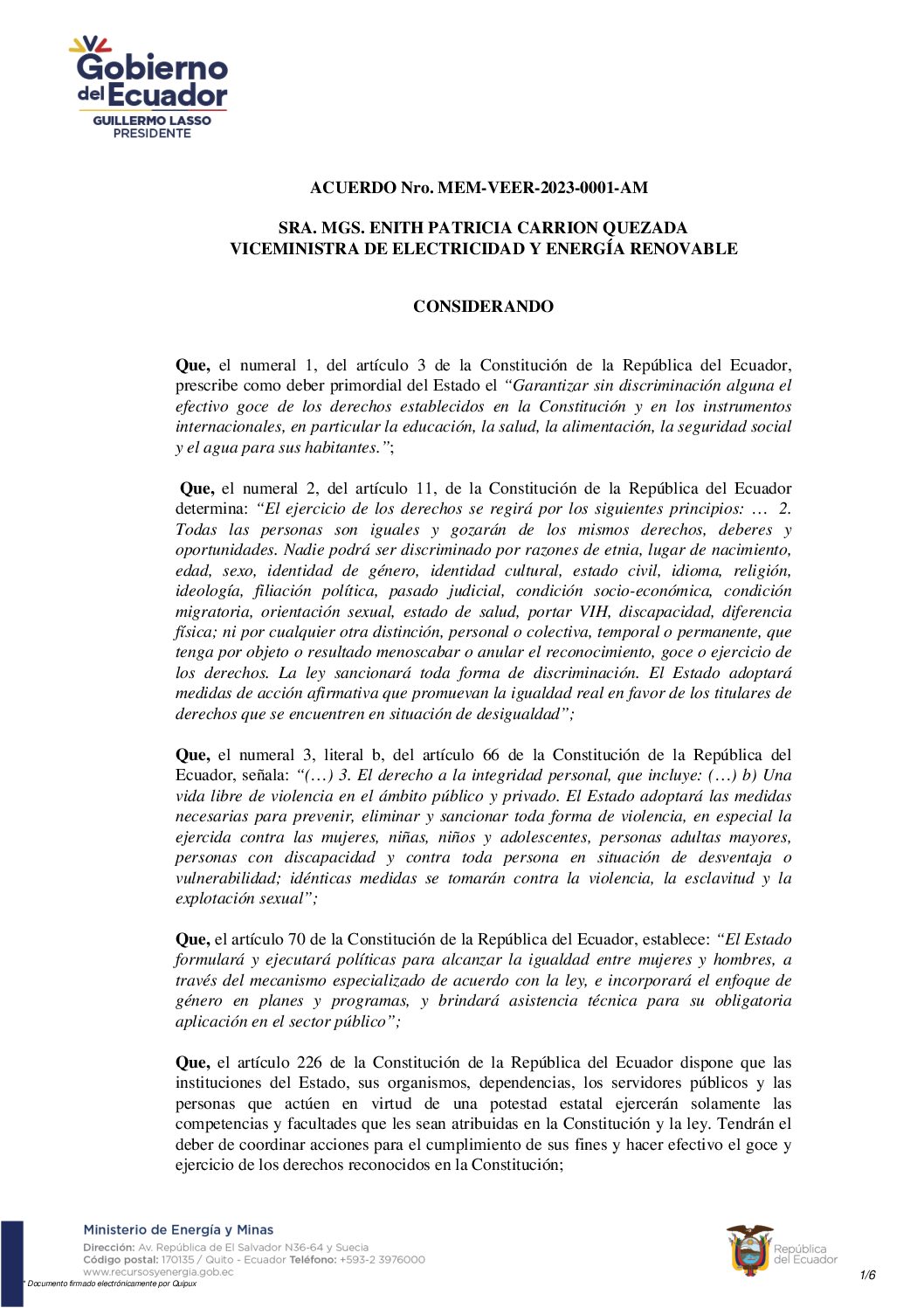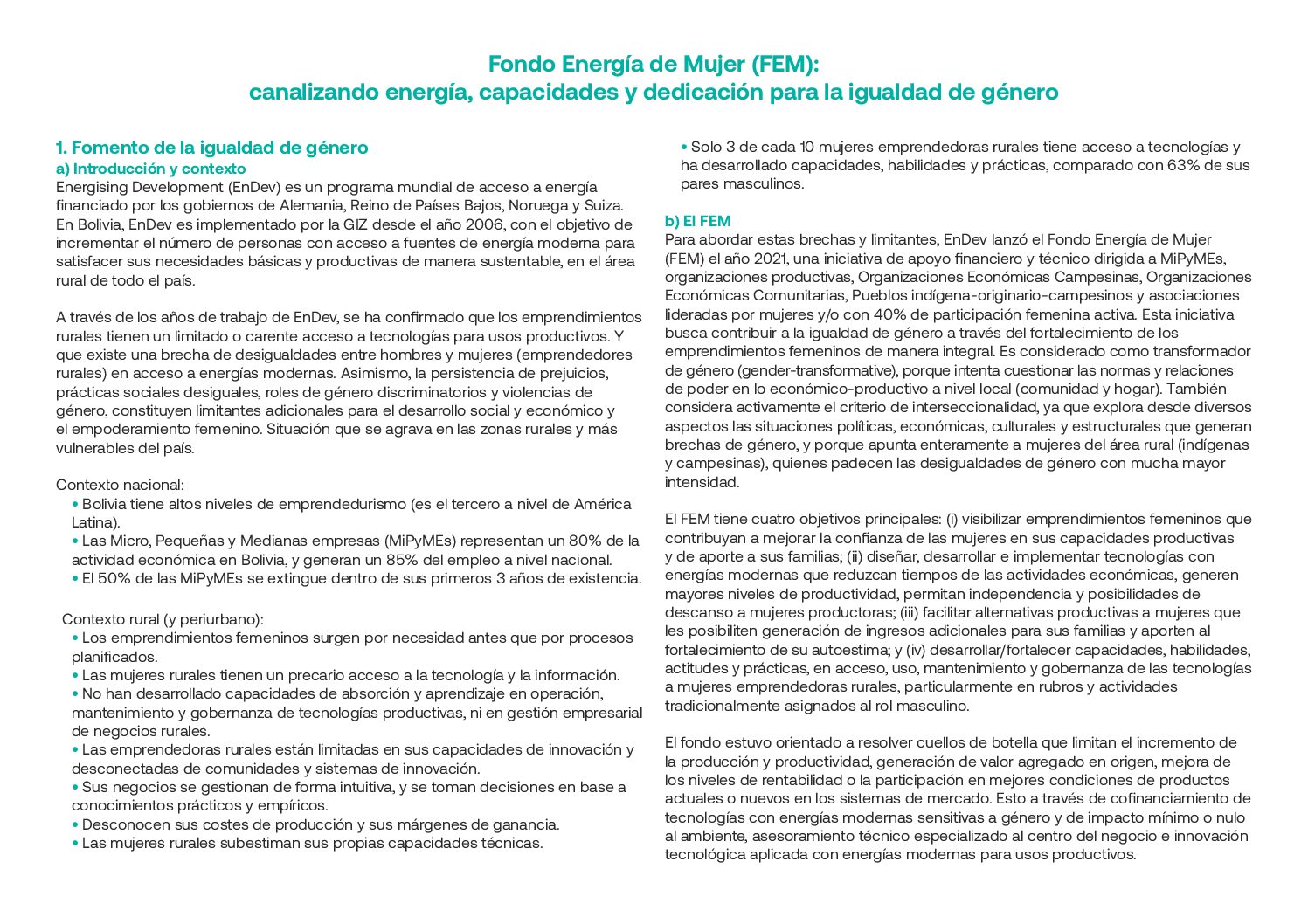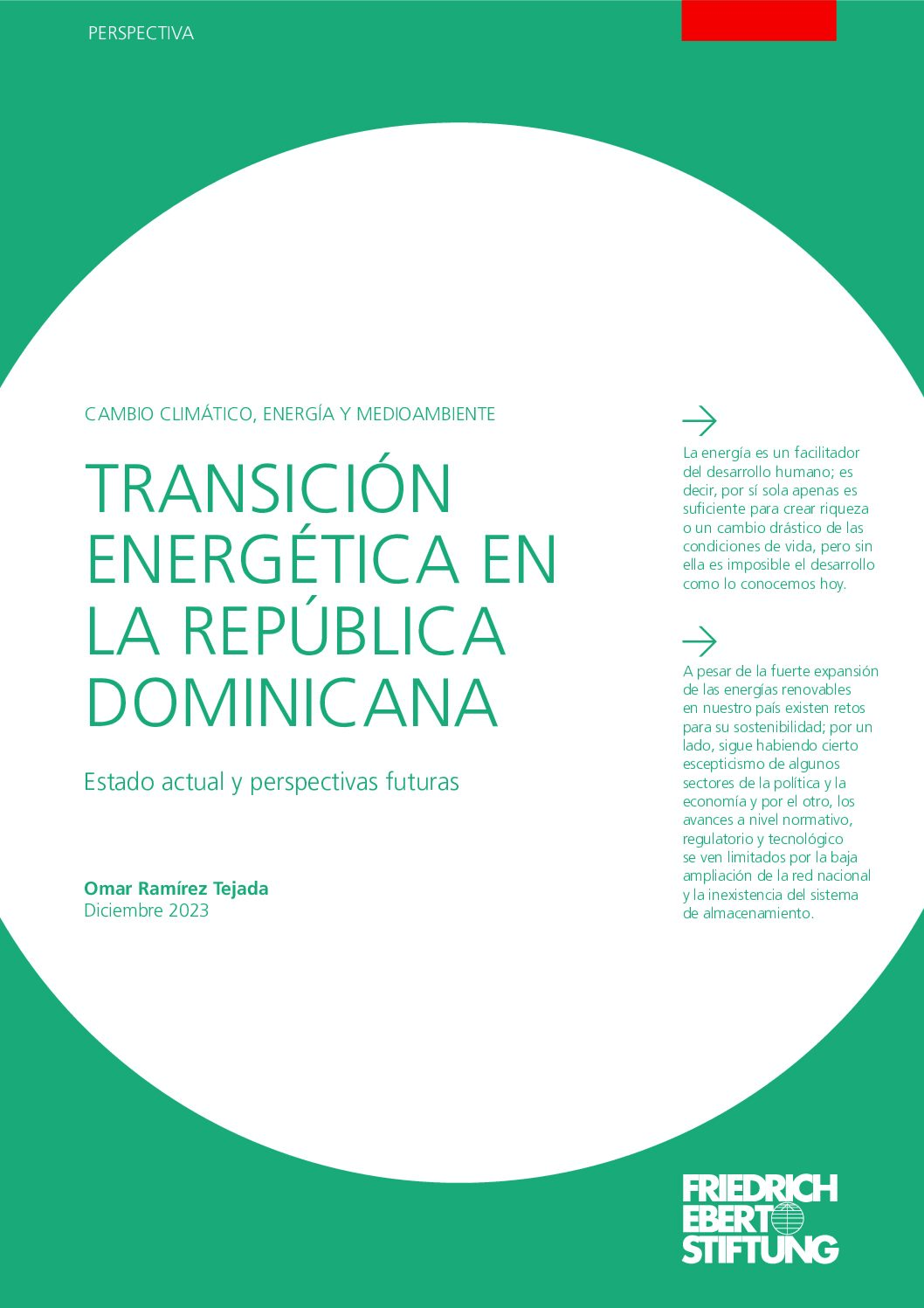These two blogs (available in English and Spanish) explain why you should undertake stakeholder mapping, how to go about it, and how to engage the stakeholders you have identified.
This is a good practice example of a ministerial agreement to promote the design and implementation of gender-inclusive strategies in the Ecuadorian energy sector.
This is a network of women in renewable energy in the Dominican Republic. It has published several reports and organises events on gender equality in the national energy sector.
This is an impact report about a fund in Bolivia that supports women-owned businesses to access the energy technology they need.
This online course provides an introduction to gender mainstreaming in energy transition plans, policies and projects.
This report assesses the progress of the energy transition in the Dominican Republic and identifies future pathways.
This article analyses the potential for solar energy in Ecuador and the efforts of the government to promote renewable energy.
This web portal provides an extensive introduction into the Bolivian renewable energy sector, policy, financing and more.
This report provides an introduction to grid-connected solar PV technology, policy and incentives and financing instruments in Bolivia.
This free course provides an introduction into solar PV technology and markets, and teaches participants how to calculate energy use and design a solar PV system for a given site.



